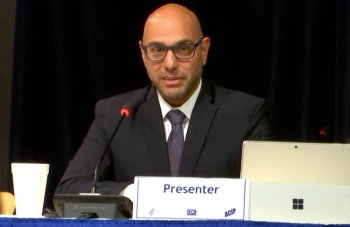
- August 10, 2018 edition
- Volume 95
- Issue 15
Take a proactive approach to bad debt
Making a cultural shift in terms of patient payments and bad debt isn’t easy, but it helps both those giving and receiving care.
Changes to the way many Americans select insurance-and the plans they ultimately choose- have introduced a number of new factors to the payment equation making the issue of bad debt ever more pervasive for medical practices. In an
More Americans are turning to high-deductible healthcare plans through both employer-provided and Affordable Care Act coverage. Consumer Reports said
This means more healthcare costs fall directly on patients-and this is happening on a significant scale across the country. Of the financial executives AArete surveyed, only one-tenth said patients feel they have coverage that can meet their health needs, while nearly half reported patients still have to pay out of pocket for the majority of their services. For physicians, that kind of shift means a new patient population, the under-insured, is now accumulating additional bad debt. This is a situation that must be addressed head-on to avoid serious financial pitfalls.
Addressing the avoidance perspective
Given the right tools and institutional mindset, practices can adopt a strategy and goals to move past the current back-end-focused approach to bad debt, and more reliably collect the money they are owed. While acquiring the technology-tools to establish payment plans, financially clear patients, and perform other tasks-is relatively straightforward, creating the necessary organization-wide cultural shift in attitude toward bad debt isn't. It's critical for practice leaders to understand why this attitudinal change is so vital, and what benefits it can bring.
As Medicare moves to a value-based care reimbursement model where payments are tied to patient satisfaction, a positive patient experience has a direct impact on physicians’ bottom line. Executive teams are investing heavily in improving the patient experience to both protect their branding strategies and meet the challenges of patients as consumers.
And since a patient’s final interaction with the clinician will be the financial settlement of what they owe, their entire perception of the quality of care, and their experience will be largely influenced by the aftercare settlement. We have found that engaging up front with the patient, in an honest and transparent manner that avoids financial surprises, is one successful strategy to shape a positive patient experience.
This potentially difficult conversation should occur when patients are following up with their primary care physician and specialists, scheduling elective procedures, or even as soon as they are stable in the emergency department.
Only one-fifth of surveyed hospital executives report that financial clearance-a practice that ensures patients’ ability to pay before they arrive for an exam or procedure-is part of their facility’s operations. This process guarantees patients have access to funds, sometimes beyond insurance and direct payment, to compensate the hospital. Financial clearance can mean having your facility's financial counselors work with patients to find alternative resources such as charity and community sponsorships, low- or no-interest loan options from the facility, or simply setting up a payment plan.
For independent medical practices, it can mean developing programmatic or manual processes to screen for a patient’s ability to pay, and verify insurance prior to scheduling visits and rendering care. Proactive bad debt avoidance is especially critical here as it likely be more difficult to track bad debt as an expense for the medical practices. Financial clearance is thus focused on ensuring that the right payment information and resources are presented in a way that helps both the facility and the patient-an attitudinal shift that moves beyond collection to education.
While adopting this financial clearance process won’t mean that 100 percent of what's owed is paid as soon as care as provided, it goes a long way toward helping facilities recoup payment, and not letting their debt turn bad or get old. Historically, there have always been patients who regularly avoid payment, and choose facilities based on the strength (or weakness) of their collection efforts. Considering this, facilities that make a strategic change in their approach to payments also benefit by keeping a financially risking group of patients at bay.
Making a cultural shift in terms of patient payments and bad debt isn't easy. Many staff members have strong opinions and established methods for dealing with this concern. However, from a top-down perspective, a change than ensures a significantly higher degree of revenue capture while still giving patients options is better for everyone involved, facility, patient, and individual staff member alike.
Bad debt is an unfortunate constant for healthcare providers. All practices, large and small, constantly contend with patients who won't or simply can't settle their bills. The issue of bad debt will never go away in the current U.S. healthcare model, but that by no means indicates there aren't strategies and tactics to tackle bad debt head on, reduce the financial liability, better connect with patients, and realize better outcomes.
John Marchisin is a managing director, and Ravi Kumrah is a director in the healthcare practice of AArete, a global consultancy specializing in data-informed performance improvement. They can be reached respectively at
Articles in this issue
over 7 years ago
Funny Bone: Work-life balanceover 7 years ago
How my life changed: transitioning to direct primary careover 7 years ago
How physicians are assisting peers to overcome burnoutover 7 years ago
Artificial intelligence in primary careover 7 years ago
Manage practice workflow to reduce burnoutover 7 years ago
How to properly document and bill for venipunctureover 7 years ago
Restoring the joy in medical practiceover 7 years ago
Physician burnout led to my retirementNewsletter
Stay informed and empowered with Medical Economics enewsletter, delivering expert insights, financial strategies, practice management tips and technology trends — tailored for today’s physicians.















